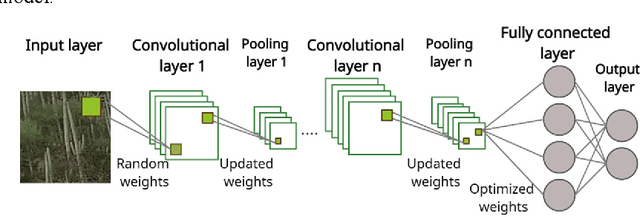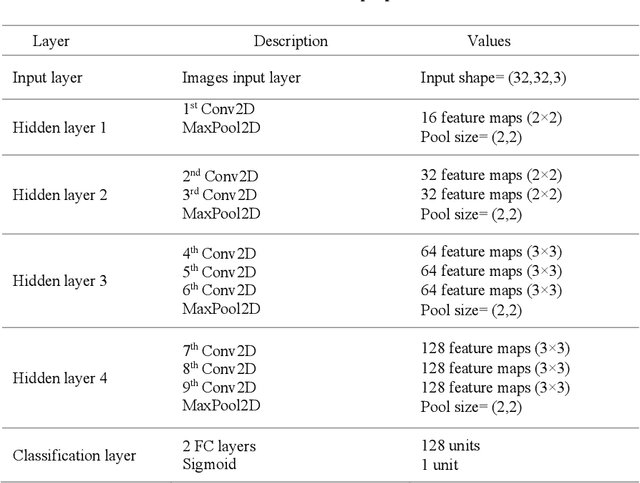Safa Ben Atitallah
Exploring Graph Mamba: A Comprehensive Survey on State-Space Models for Graph Learning
Dec 24, 2024



Abstract:Graph Mamba, a powerful graph embedding technique, has emerged as a cornerstone in various domains, including bioinformatics, social networks, and recommendation systems. This survey represents the first comprehensive study devoted to Graph Mamba, to address the critical gaps in understanding its applications, challenges, and future potential. We start by offering a detailed explanation of the original Graph Mamba architecture, highlighting its key components and underlying mechanisms. Subsequently, we explore the most recent modifications and enhancements proposed to improve its performance and applicability. To demonstrate the versatility of Graph Mamba, we examine its applications across diverse domains. A comparative analysis of Graph Mamba and its variants is conducted to shed light on their unique characteristics and potential use cases. Furthermore, we identify potential areas where Graph Mamba can be applied in the future, highlighting its potential to revolutionize data analysis in these fields. Finally, we address the current limitations and open research questions associated with Graph Mamba. By acknowledging these challenges, we aim to stimulate further research and development in this promising area. This survey serves as a valuable resource for both newcomers and experienced researchers seeking to understand and leverage the power of Graph Mamba.
Enhancing Internet of Things Security throughSelf-Supervised Graph Neural Networks
Dec 17, 2024



Abstract:With the rapid rise of the Internet of Things (IoT), ensuring the security of IoT devices has become essential. One of the primary challenges in this field is that new types of attacks often have significantly fewer samples than more common attacks, leading to unbalanced datasets. Existing research on detecting intrusions in these unbalanced labeled datasets primarily employs Convolutional Neural Networks (CNNs) or conventional Machine Learning (ML) models, which result in incomplete detection, especially for new attacks. To handle these challenges, we suggest a new approach to IoT intrusion detection using Self-Supervised Learning (SSL) with a Markov Graph Convolutional Network (MarkovGCN). Graph learning excels at modeling complex relationships within data, while SSL mitigates the issue of limited labeled data for emerging attacks. Our approach leverages the inherent structure of IoT networks to pre-train a GCN, which is then fine-tuned for the intrusion detection task. The integration of Markov chains in GCN uncovers network structures and enriches node and edge features with contextual information. Experimental results demonstrate that our approach significantly improves detection accuracy and robustness compared to conventional supervised learning methods. Using the EdgeIIoT-set dataset, we attained an accuracy of 98.68\%, a precision of 98.18%, a recall of 98.35%, and an F1-Score of 98.40%.
Self-Supervised Learning for Graph-Structured Data in Healthcare Applications: A Comprehensive Review
Nov 28, 2024



Abstract:The abundance of complex and interconnected healthcare data offers numerous opportunities to improve prediction, diagnosis, and treatment. Graph-structured data, which includes entities and their relationships, is well-suited for capturing complex connections. Effectively utilizing this data often requires strong and efficient learning algorithms, especially when dealing with limited labeled data. It is increasingly important for downstream tasks in various domains to utilize self-supervised learning (SSL) as a paradigm for learning and optimizing effective representations from unlabeled data. In this paper, we thoroughly review SSL approaches specifically designed for graph-structured data in healthcare applications. We explore the challenges and opportunities associated with healthcare data and assess the effectiveness of SSL techniques in real-world healthcare applications. Our discussion encompasses various healthcare settings, such as disease prediction, medical image analysis, and drug discovery. We critically evaluate the performance of different SSL methods across these tasks, highlighting their strengths, limitations, and potential future research directions. Ultimately, this review aims to be a valuable resource for both researchers and practitioners looking to utilize SSL for graph-structured data in healthcare, paving the way for improved outcomes and insights in this critical field. To the best of our knowledge, this work represents the first comprehensive review of the literature on SSL applied to graph data in healthcare.
Strengthening Network Intrusion Detection in IoT Environments with Self-Supervised Learning and Few Shot Learning
Jun 04, 2024Abstract:The Internet of Things (IoT) has been introduced as a breakthrough technology that integrates intelligence into everyday objects, enabling high levels of connectivity between them. As the IoT networks grow and expand, they become more susceptible to cybersecurity attacks. A significant challenge in current intrusion detection systems for IoT includes handling imbalanced datasets where labeled data are scarce, particularly for new and rare types of cyber attacks. Existing literature often fails to detect such underrepresented attack classes. This paper introduces a novel intrusion detection approach designed to address these challenges. By integrating Self Supervised Learning (SSL), Few Shot Learning (FSL), and Random Forest (RF), our approach excels in learning from limited and imbalanced data and enhancing detection capabilities. The approach starts with a Deep Infomax model trained to extract key features from the dataset. These features are then fed into a prototypical network to generate discriminate embedding. Subsequently, an RF classifier is employed to detect and classify potential malware, including a range of attacks that are frequently observed in IoT networks. The proposed approach was evaluated through two different datasets, MaleVis and WSN-DS, which demonstrate its superior performance with accuracies of 98.60% and 99.56%, precisions of 98.79% and 99.56%, recalls of 98.60% and 99.56%, and F1-scores of 98.63% and 99.56%, respectively.
Revolutionizing Disease Diagnosis: A Microservices-Based Architecture for Privacy-Preserving and Efficient IoT Data Analytics Using Federated Learning
Aug 27, 2023



Abstract:Deep learning-based disease diagnosis applications are essential for accurate diagnosis at various disease stages. However, using personal data exposes traditional centralized learning systems to privacy concerns. On the other hand, by positioning processing resources closer to the device and enabling more effective data analyses, a distributed computing paradigm has the potential to revolutionize disease diagnosis. Scalable architectures for data analytics are also crucial in healthcare, where data analytics results must have low latency and high dependability and reliability. This study proposes a microservices-based approach for IoT data analytics systems to satisfy privacy and performance requirements by arranging entities into fine-grained, loosely connected, and reusable collections. Our approach relies on federated learning, which can increase disease diagnosis accuracy while protecting data privacy. Additionally, we employ transfer learning to obtain more efficient models. Using more than 5800 chest X-ray images for pneumonia detection from a publicly available dataset, we ran experiments to assess the effectiveness of our approach. Our experiments reveal that our approach performs better in identifying pneumonia than other cutting-edge technologies, demonstrating our approach's promising potential detection performance.
Randomly Initialized Convolutional Neural Network for the Recognition of COVID-19 using X-ray Images
May 17, 2021



Abstract:By the start of 2020, the novel coronavirus disease (COVID-19) has been declared a worldwide pandemic. Because of the severity of this infectious disease, several kinds of research have focused on combatting its ongoing spread. One potential solution to detect COVID-19 is by analyzing the chest X-ray images using Deep Learning (DL) models. In this context, Convolutional Neural Networks (CNNs) are presented as efficient techniques for early diagnosis. In this study, we propose a novel randomly initialized CNN architecture for the recognition of COVID-19. This network consists of a set of different-sized hidden layers created from scratch. The performance of this network is evaluated through two public datasets, which are the COVIDx and the enhanced COVID-19 datasets. Both of these datasets consist of 3 different classes of images: COVID19, pneumonia, and normal chest X-ray images. The proposed CNN model yields encouraging results with 94% and 99% of accuracy for COVIDx and enhanced COVID-19 dataset, respectively.
An Enhanced Randomly Initialized Convolutional Neural Network for Columnar Cactus Recognition in Unmanned Aerial Vehicle Imagery
May 10, 2021



Abstract:Recently, Convolutional Neural Networks (CNNs) have made a great performance for remote sensing image classification. Plant recognition using CNNs is one of the active deep learning research topics due to its added-value in different related fields, especially environmental conservation and natural areas preservation. Automatic recognition of plants in protected areas helps in the surveillance process of these zones and ensures the sustainability of their ecosystems. In this work, we propose an Enhanced Randomly Initialized Convolutional Neural Network (ERI-CNN) for the recognition of columnar cactus, which is an endemic plant that exists in the Tehuac\'an-Cuicatl\'an Valley in southeastern Mexico. We used a public dataset created by a group of researchers that consists of more than 20000 remote sensing images. The experimental results confirm the effectiveness of the proposed model compared to other models reported in the literature like InceptionV3 and the modified LeNet-5 CNN. Our ERI-CNN provides 98% of accuracy, 97% of precision, 97% of recall, 97.5% as f1-score, and 0.056 loss.
 Add to Chrome
Add to Chrome Add to Firefox
Add to Firefox Add to Edge
Add to Edge